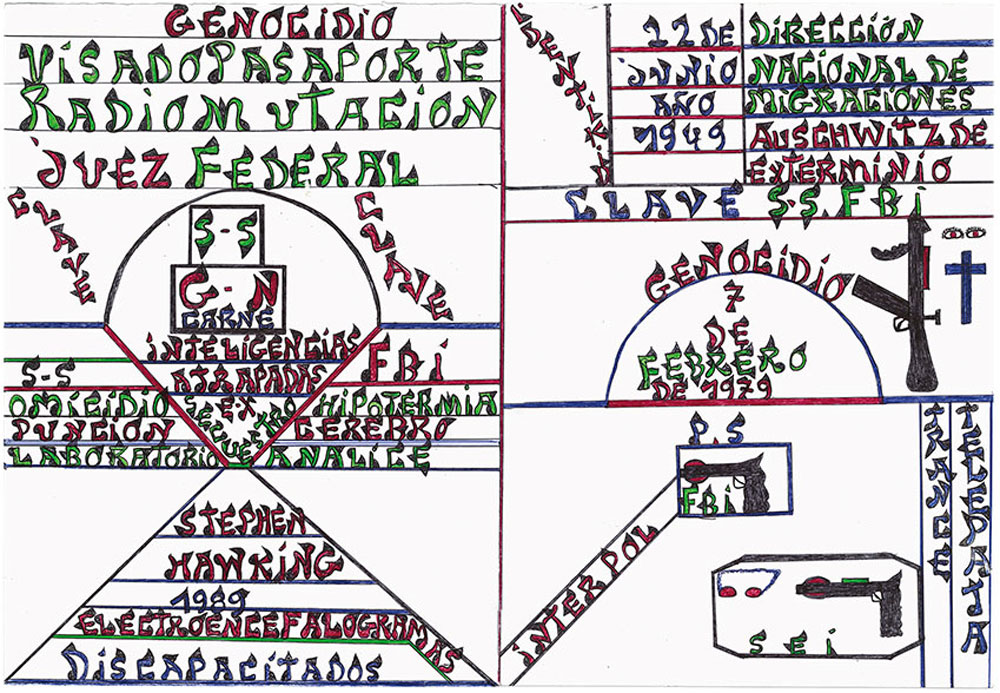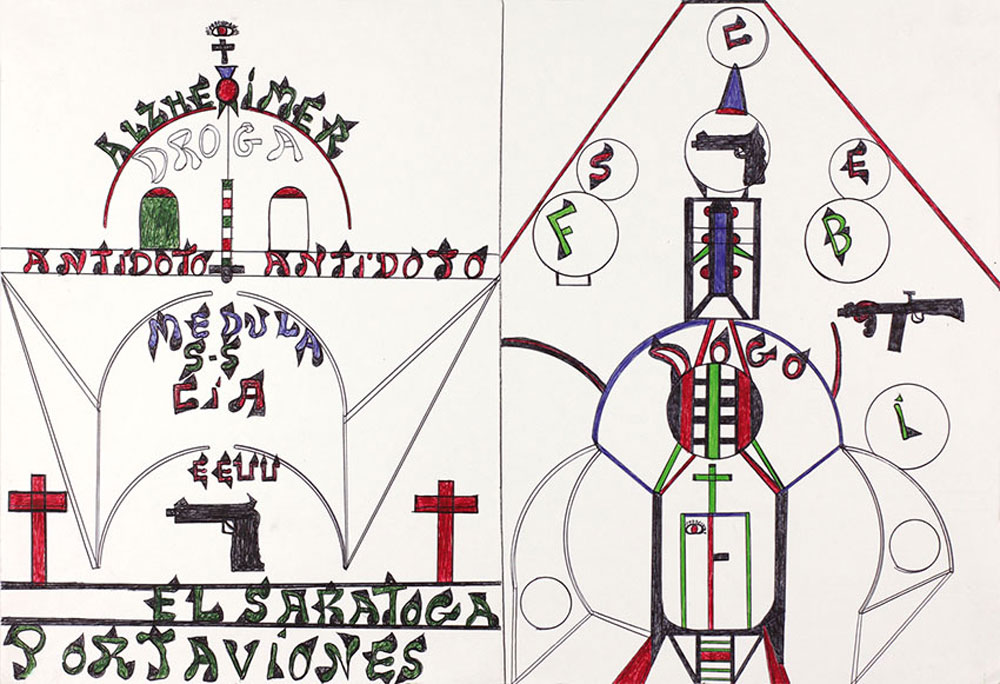ART CITIES:Paris-Anibal Brizuela
Aníbal Brizuela recently died in Argentina, at the age of 84, after spending more than half a century at the Colonia d’Oliveros psychiatric clinic in the town of Rosario. Still little known in this part of the world, he is nonetheless the major figure of the Argentine Art Brut scene and his fame has, over there, surpassed the circle of the few specialists in this area.
By Dimitris Lempesis
Photo: Christian Berst Art Brut Archive
The exhibition “Ordo Ab Chao” with works by Anibal Brizuela is on presentation at : Christian Berst-Art Brut in Paris. Little is known about Aníbal Brizuela’s previous life, he had no known family and the circumstances leading him to spend 40 years among more than 700 other patients at the Oliveros psychiatric hospital remain obscure. The genesis of his creation is all the same immemorial and it is only thanks to the late recognition of his work and the sale of works that resulted from it that he would spend the last decade of his life in a small, more welcoming therapeutic community. Born in the Province of Buenos Aires in 1935, this short and skinny man led an austere life at the hospital, helping hospital staff with their daily tasks and surreptitiously devoting himself to his drawings with colored ballpoint pens on found papers or medicine boxes. If his oracle drawings evoke the Chinese “dazibao”, this is not only to do with the fact that he liked to display them all over the hospital. Charged with mystical or political references and symbols, punctuated by allusions to current events, his highly structured drawings are striking both for their sibylline character and their formal freedom. It was only in 2003, when he met Fabiana Imola, director of the hospital’s cultural space, that Brizuela started to benefit from the support and stimulation necessary for the thriving of his plastic work. Although he has never accepted the invitation to join other patients in drawing, he agreed to present his works, from 2005, at the ArteBA contemporary art fair in Buenos Aires attracting the attention of numerous national and international collectors and art galleries. In his feature film “Tanke Papi” (2010), Rubén Plataneo explores the artist’s past and attempts to decipher the enigma of the meaning of his drawings. In 2017, “Espiritu que Vuelve” brings together some of Aníbal’s texts in which he recounts his telekinetic experiences, the vision of a flying saucer and a temple descending from the sky no one but him is able to perceive. In his short and fragmentary autobiography, Aníbal explains: “I always write with ballpoint pens. I can decipher the shapes, but they’re afraid. (…) By concentrating the mind, by building up mental strength, I begin to see and write. When I write, I don’t feel anything. I’m concentrating. I can’t stop thinking about this book. When the pencil leads are empty, I throw them into the tree to protect the animals eating there”. For Brizuela cultivated the art of omission, emphasizing words and acronyms, often without any obvious link, at times threatening, at times invocative. Meanwhile the drawings that emerge from his small, personal library of icons (arms, crosses, coffins, syringes, heads) underscore the point. Without really revealing if this polysemous profusion is meant to convey the disorder of the world, or if these antagonisms that rattle him were rather the reflection of the disorder from which Aníbal sought to free himself through incantation
Info: Christian Berst Art Brut, 3-5 passage des Gravilliers(entrance 10, rue chapon), Paris, Duration: 6/6-13/7/19, Days & Hours: Tue-Sat 14:00-19:00, www.christianberst.com



